Developing a Style
“Art is not what you see, but what you make others see.”
– Edgar Degas
Humanist Allegories
My paintings are quiet glimpses into fictional scenes which ask the viewer to slow down and contemplate. Although the images depict realistic objects and people, there is more to them than just being accurate reproductions of the physical world.
Is that book just a book or does it represent something more? That flower, growing out of the rock, why is that there and what does it symbolise? Why is Jesus, carrying his cross, facing one direction but the women is facing the opposite?
When you look at my work, these are the kind of questions I hope you will ask yourself. I don't want to give you my answers to these questions for they are mine and you will have your own; but rarely I do paint an object or an expression or a pattern just to reproduce it in paint. They are metaphors and symbols through which I am trying to communicate.
The individual dominates my paintings, both allegorically and visually. By this I mean that the painting's narrative is focused on the inner experience of the individual; and, visually, the individual is the most dominant object in the painting.
This focus on the individual's inner experience differs from other styles of allegorical painting, where people are used to convey a story, rather than them being the story themselves. In this regard, I think of my style as being inward and internal rather than outward and external.
My painting style is a reflection of the subjects and aesthetics that I personally find appealing. I started down this path when I first saw The Holy Family Meeting the Infant St John the Baptist and The Holy Family with a Palm Tree, both by Raphael. These paintings greet you as you enter the Scottish National Gallery in Edinburgh and I can still remember stopping in my tracks and gasping in awe.
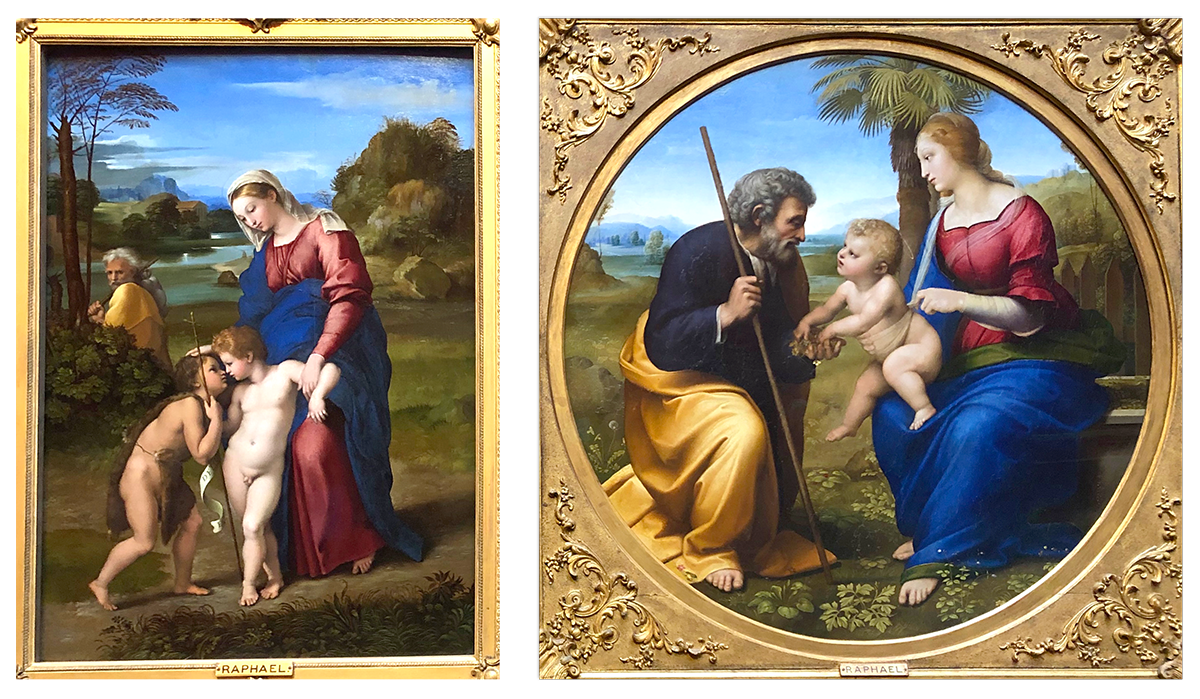
The Holy Family Meeting the Infant St John the Baptist (left) and The Holy Family with a Palm Tree.
It is the balance of geometry, the harmonious rich colour and the elegant brush work that draw me to Raphael's work; which, despite being five hundred years old, holds the greatest influence over my own approach to painting. Whenever I am standing in front of one of his paintings, I am reminded that this is the area of art where I belong.
Geometric Forms
I think an artist's style should reflect the artist, so my style reflects the fact that I am primarily a mathematician and computer programmer who arrived at fine art painting later in life.
As a mathematician, I was taught the long history of the interplay of mathematics and the arts mostly, of course, from the point of view of mathematicians. Later, as I developed more knowledge of art, I started to see how mathematics looks from an artist's point of view. This change of perspective actually enhanced my understanding of mathematics - not at a technical level, but philosophically. In addition, by learning about the ways artists of the past had used mathematics, I gained a fuller or truer understanding of how these artists worked and the tools and knowledge they used.
From Piero della Francesca to da Vinci; from Vermeer to Dürer and many, many others, mathematics has, for centuries, been used by painters. In my work, I make use of something called the Golden Ratio. This is a number that has, since at least the Renaissance period, interested artists.
The first written record of the Golden Ratio comes from the work of the ancient Greek mathematican Euclid. He stated that there is only one way to segment a line into two unequal segments such that the ratio of the lengths of the two new segments is the same as the ratio of the length of the original line to the length of the longer new segment. This ratio, which has a value of 1.618, is what we call the Golden Ratio.
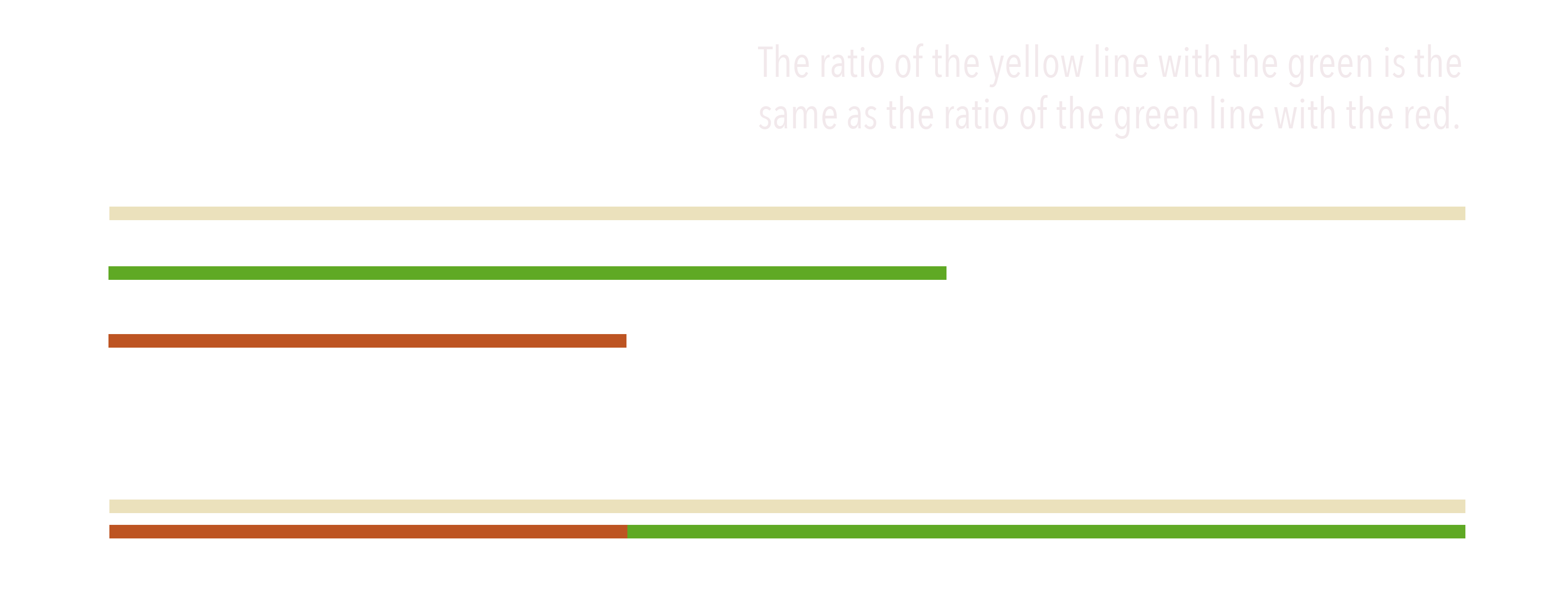
Segmenting a line according to the Golden Ratio, as described by Euclid.
It turns out that the Golden Ratio crops up in many unexpected areas of mathematics and nature. Also, the number itself (which has a more technical definition than the one I gave above) has so many remarkable mathematical properties that Renaissance intellectuals wondered whether the number was something directly from God's hand; a fundamental element of nature itself. Some artists incorporated the Golden Ratio into their work, thinking that by doing so their work would have a more natural aesthetic, be more pleasing to look at and, perhaps, more divine.
I am fascinated by this idea. I understand mathematics enough to appreciate just how mathematically remarkable the Golden Ratio is and the idea that it is part of the fundamental structure of reality is not only intriguing but also very plausible.
A Golden Rectangle is a rectangle whose height and width have a ratio equal to the Golden Ratio. Golden Rectangles appear in many places in visual art and I use them as the shape of my wooden panels. That is, each of my paintings is painted on a wooden panel cut into the shape of a Golden Rectangle.
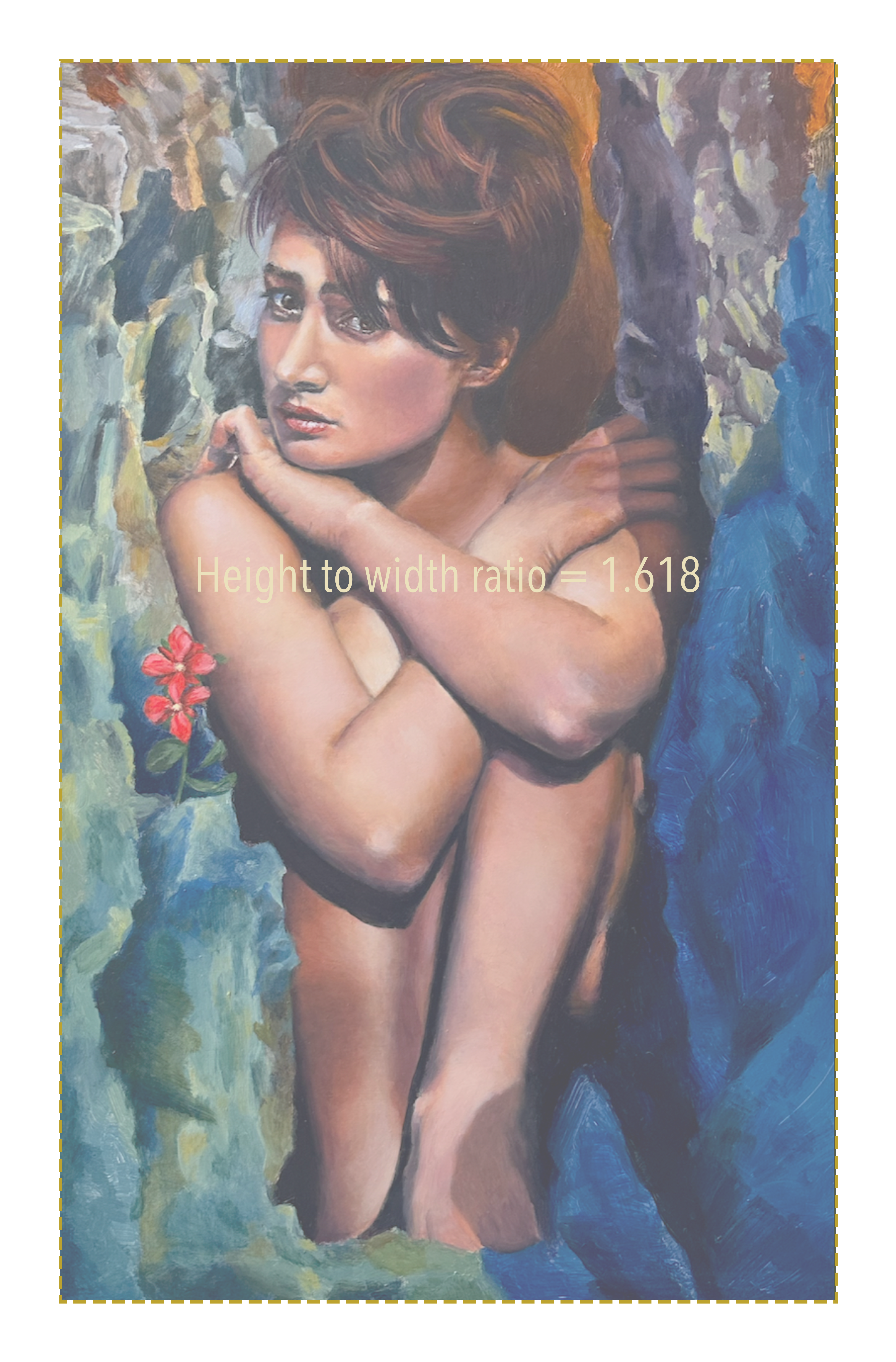
I cut my wood panels into Golden Rectangles, where the ratio of the height to the width is 1.618.
I also use the Golden Ratio when deciding where to place objects on the canvas. I should note, though, that I use the ratio as a guide or as a suggestion for how to create a particular geometric balance, rather than as a rigid rule about exactly where things go.
When using the Golden Ratio as a placement guide, I breakdown the panel into smaller shapes. These shapes are formed by connecting specific parts of the Golden Rectangle (this is called dissecting), creating other shapes which themselves are related to the Golden Ratio. This is the approach I used in “The Philosopher”.
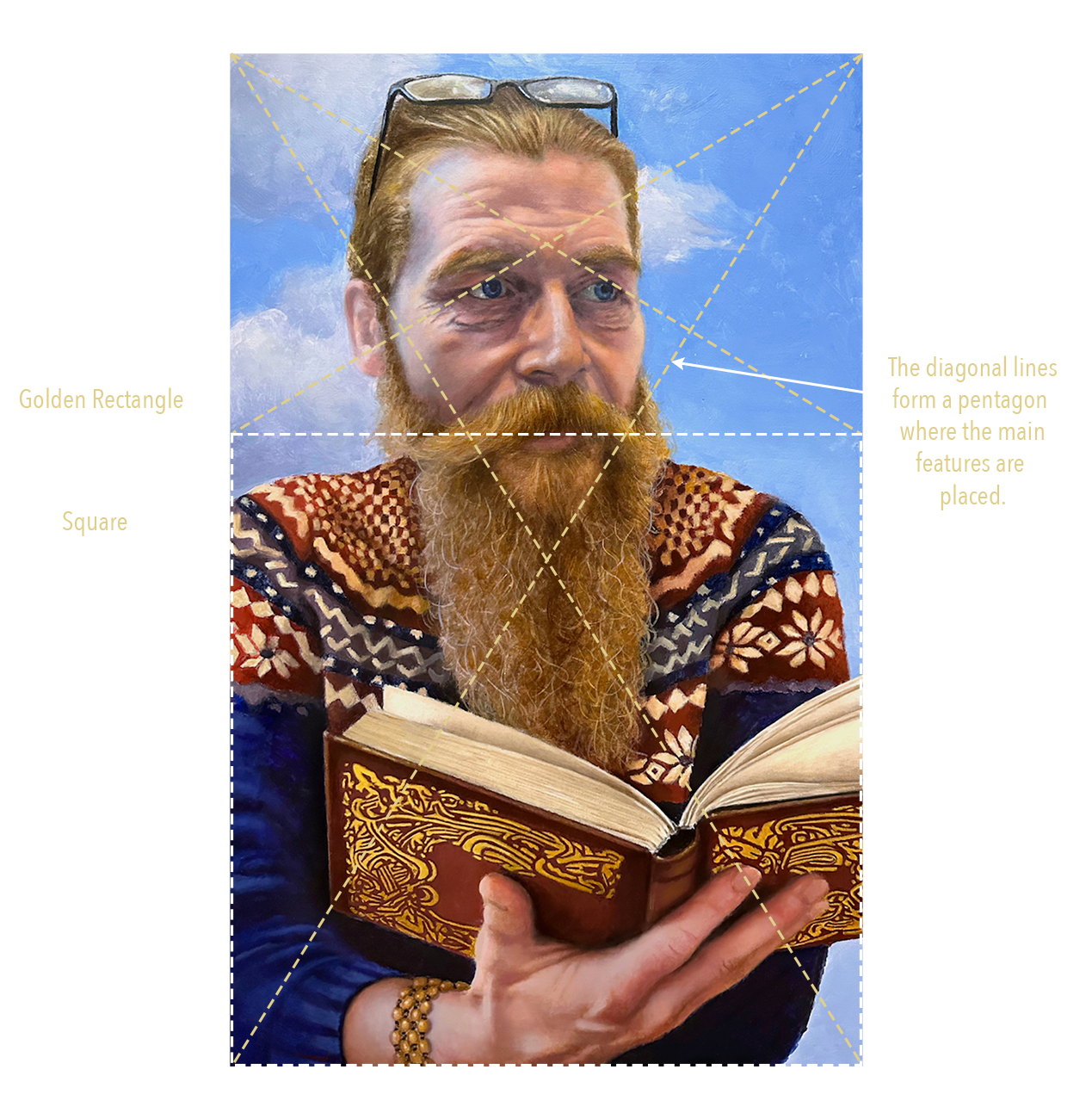
There are many ways the Golden Ratio can be used as a guide. Here, in “The Philosopher”, I have placed the main facial features within the central pentagon formed by the diagonal lines.
First, the panel is split into two shapes: a square at the bottom and a rectangle at the top. It turns out, by the way, that the smaller rectangle at the top is also a Golden Rectangle (another unexpected property). Next, two diagonal lines are drawn from the top-left corner. One of these lines connects the top-left corner to the bottom-right corner of the panel (the original Golden Rectangle); and the other one connects the top-left corner to the bottom-right corner of the smaller Golden Rectangle at the top of the panel. The same is done for the top-right corner.
These four diagonal lines form a pentagon in the centre of the panel. As you can see, in “The Philosopher”, I placed the main facial features of the subject into this pentagon (the pentagon is intricately linked to the Golden Ratio, so it is fitting for it to appear here).
Another mathematical aspect of my style is shape repetition. This is where I subtly repeat variations of a particular shape throughout the painting. The shape can vary: some of them are bigger than others; some of them thinner and so on. The point is not exactness but to, instead, imbue a sense of geometrical harmony. Rather like how, in music, variations of a particular musical phrase are repeated throughout the piece.
In “Between Rocks”, the repeated shape is a triangle. The composition is dominated by a large triangle formed by the subject and the rocks, but there are many other triangles in the composition too; all slightly different in shape and size.
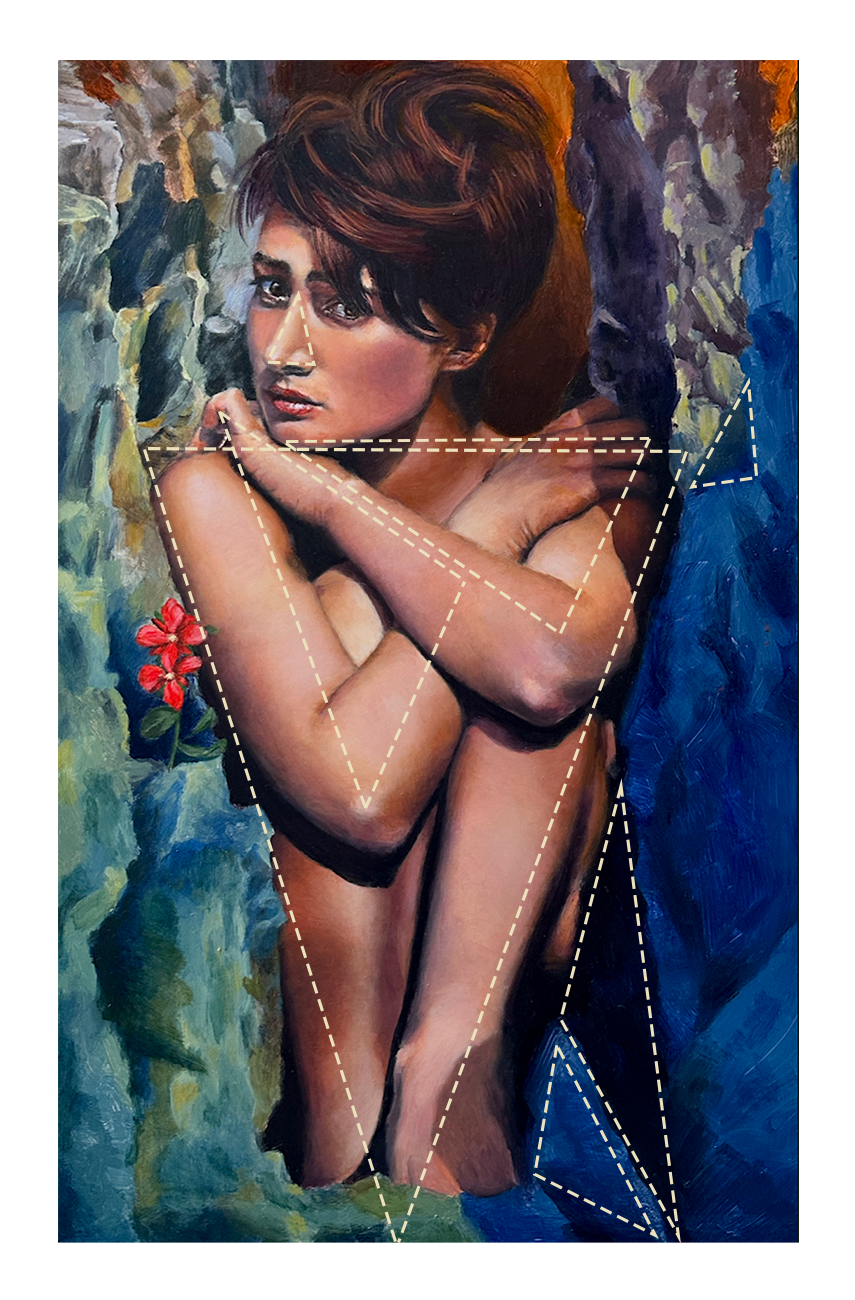
Triangles are the repeated shape in Between Rocks.
Whereas in “The Philosopher”, rectangles are repeated throughout the composition, the most obvious of which being the book but subtler rectangles appear in the shape of the face and beard.
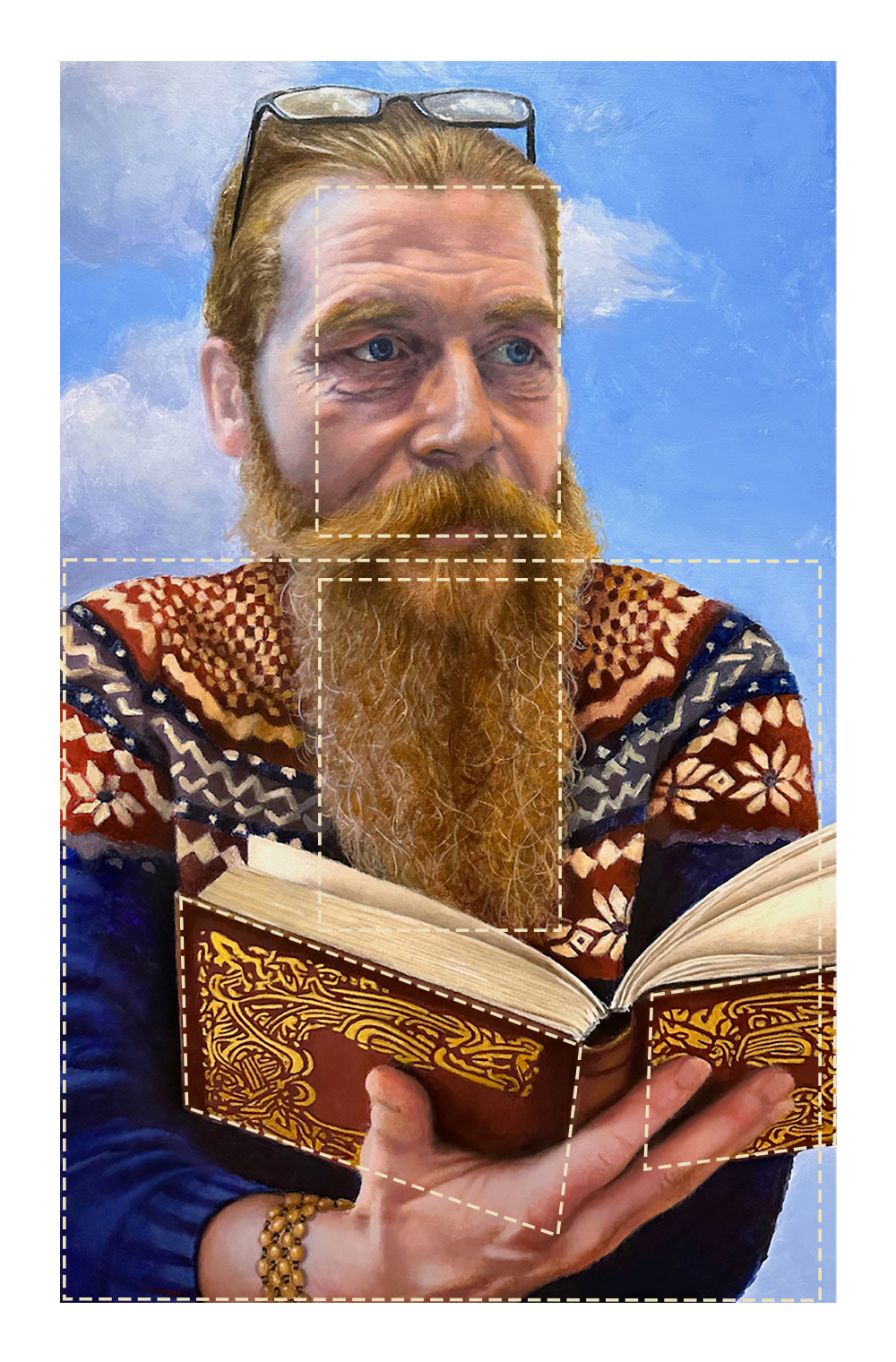
Rectangles are the repeated shape in The Philosopher.
Technology, Art and Craftsmanship
As a computer programmer, I have worked at the forefront of computer technology all of my life and have been a contributor to the rise of software in our society over these last few decades. Much can be debated about the role of technology in art and I have encountered a wide range of opinions. Some people think that technology has no role to play in “real” art and should be avoided at all costs; others have the polar opposite opinion and see technology as a replacement for the “outdated human labour” of drawing and painting; in other words, according to this view, a modern artist delegates production to a machine. My stance is that computer technology is at its best when it is used as a tool to enhance the human creative process; thus, I think computer technology has an important role to play in art but we mustn't let it diminish or de-skill the human.
I am a painter who works slowly and thoughtfully. Each of my pieces has taken me many weeks of careful drawing and painting to create. I believe deeply in craftsmanship and my paintings are carefully and meticulously crafted objects. Like Giotto and Vermeer and Dürer, I make use of the technology available to me. I use it to explore ideas in composition and geometry; for photographic references; and even for AI-assisted brainstorming. But the technology remains a tool rather than the medium; and it, alongside the painstakingly learned skills of fine art painting, form the modern toolset I use in my creative process.
All Content © Gabhan Berry